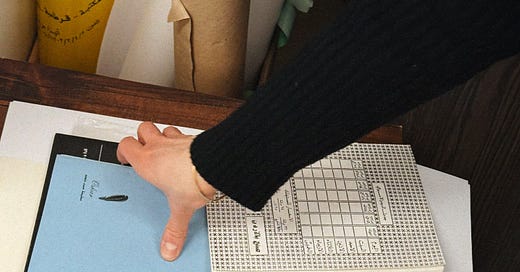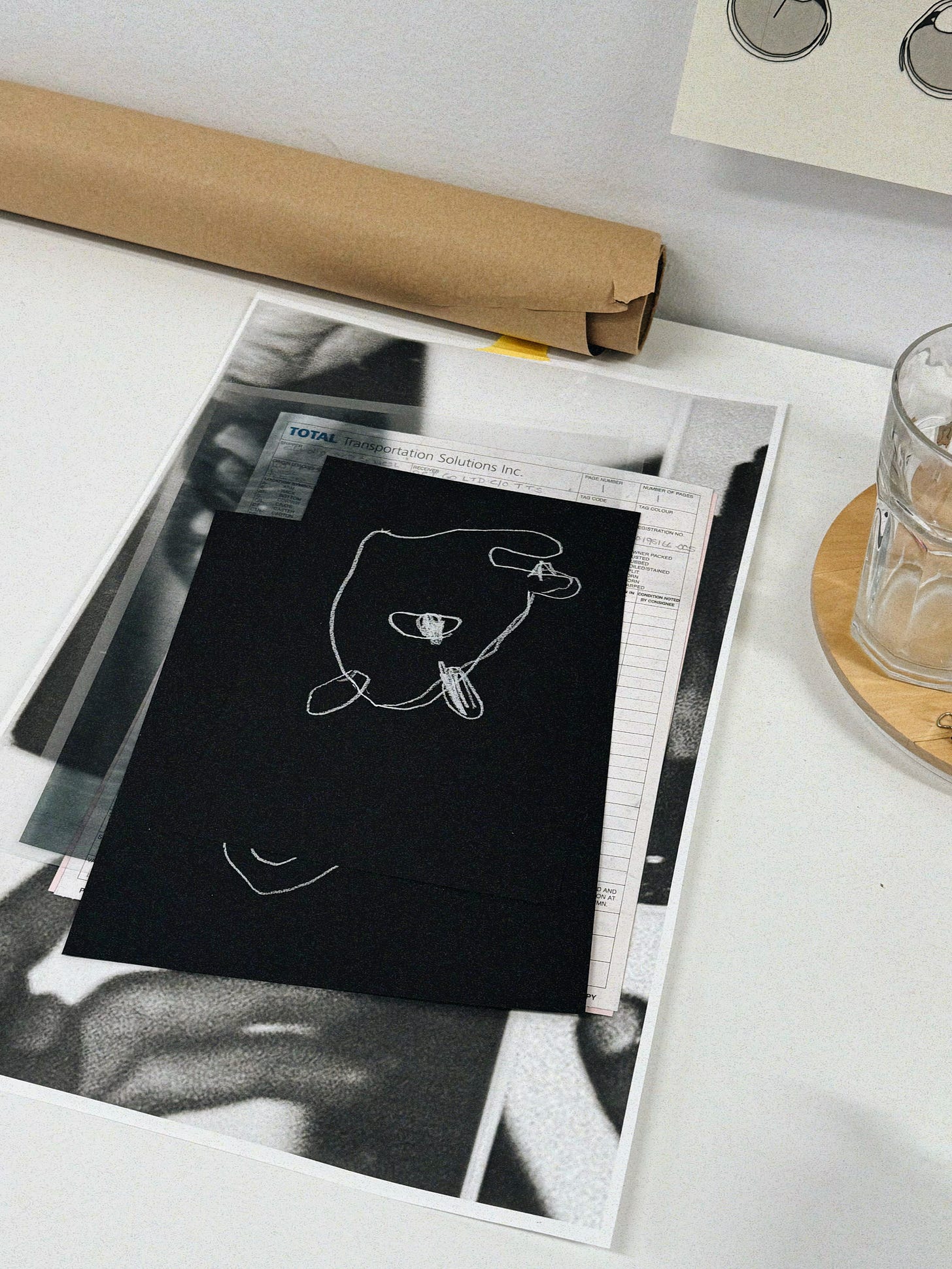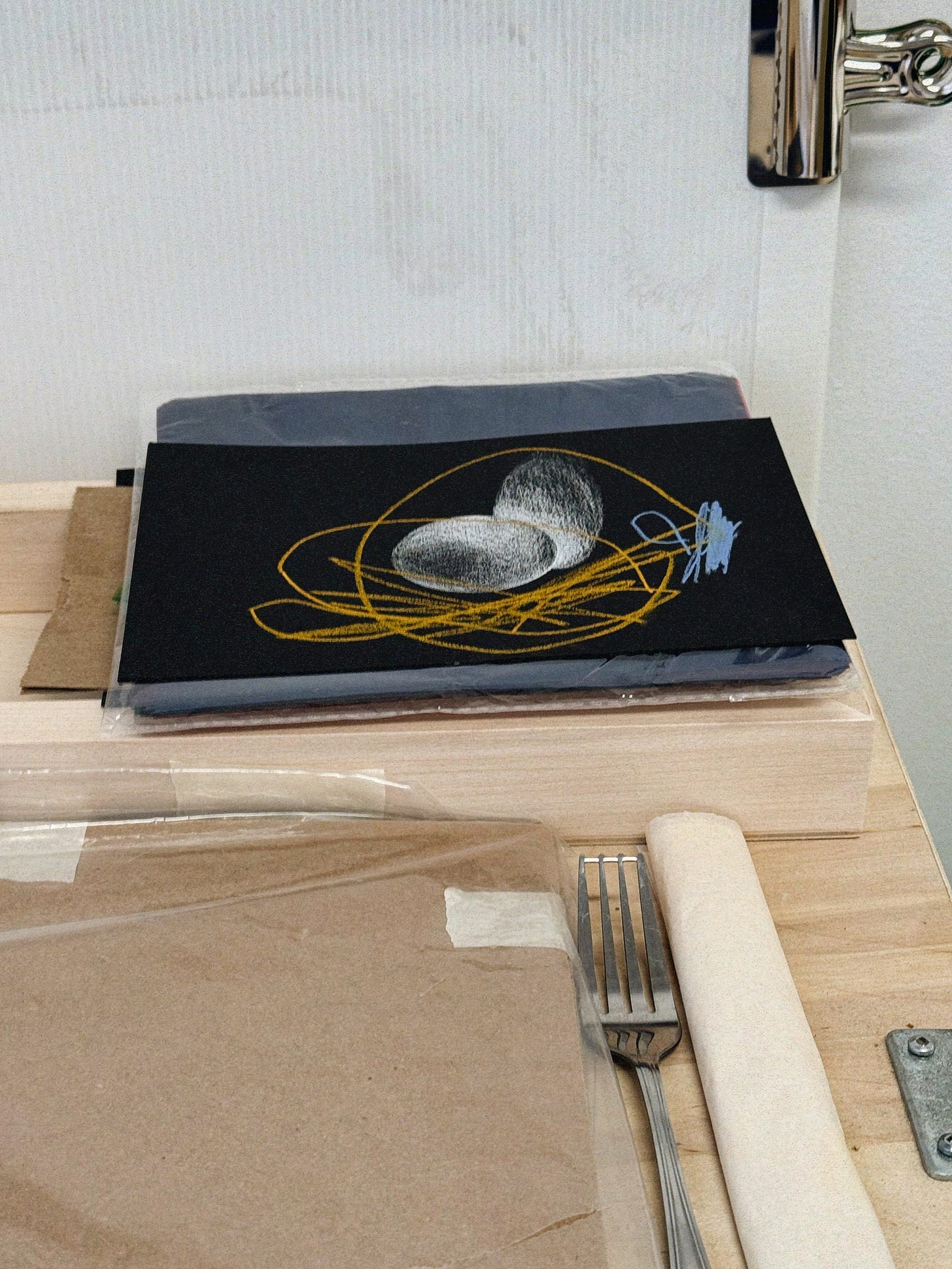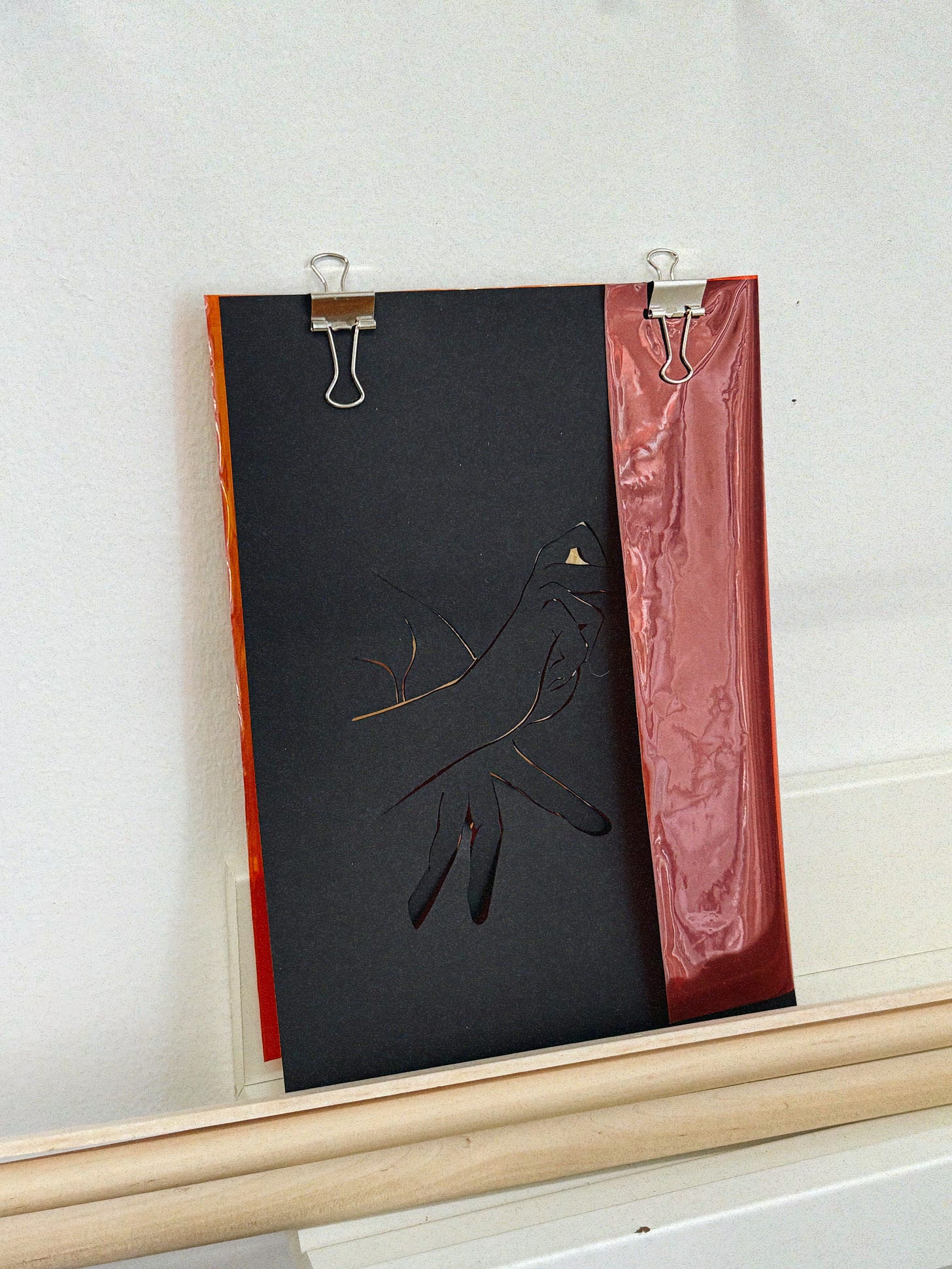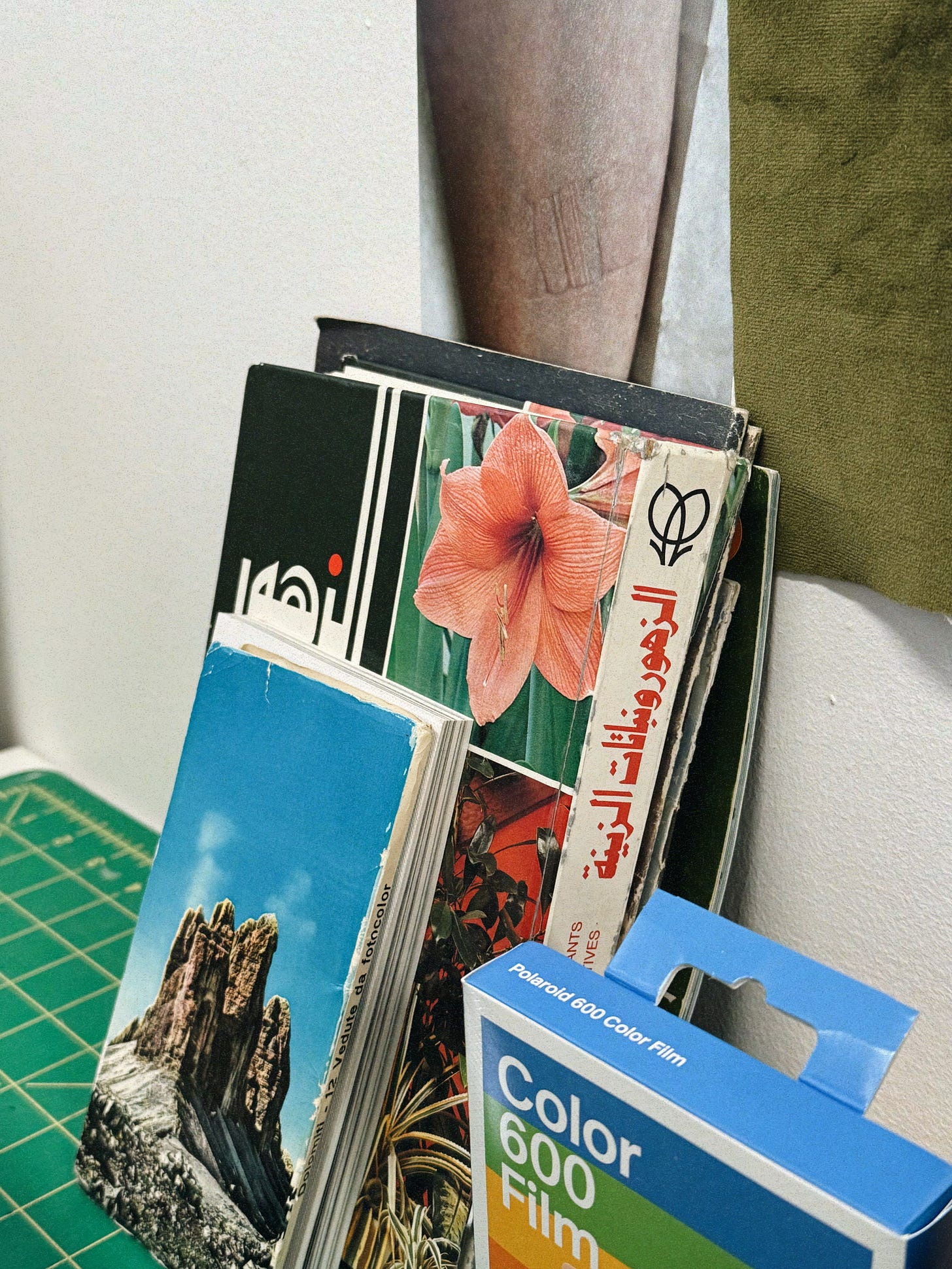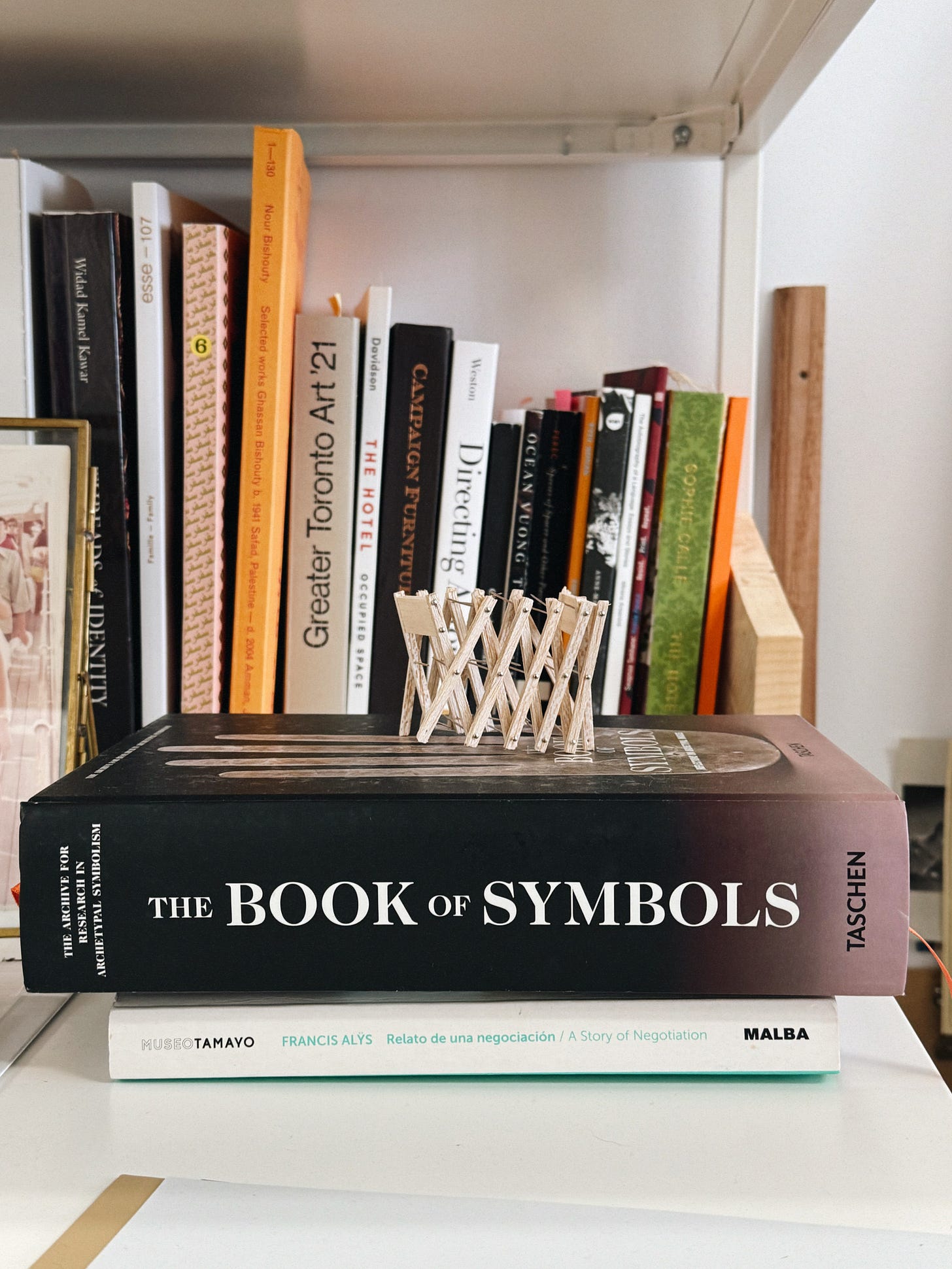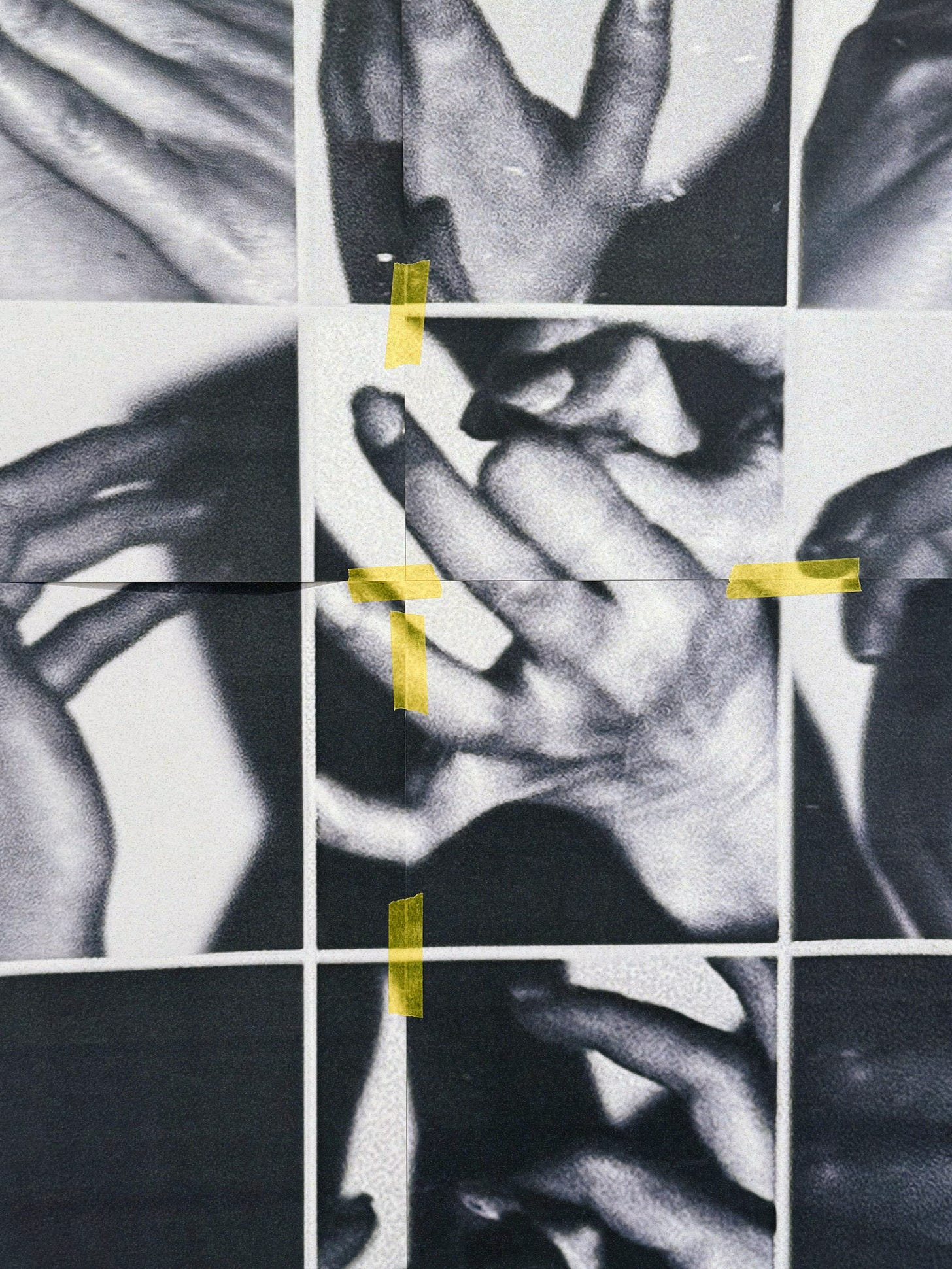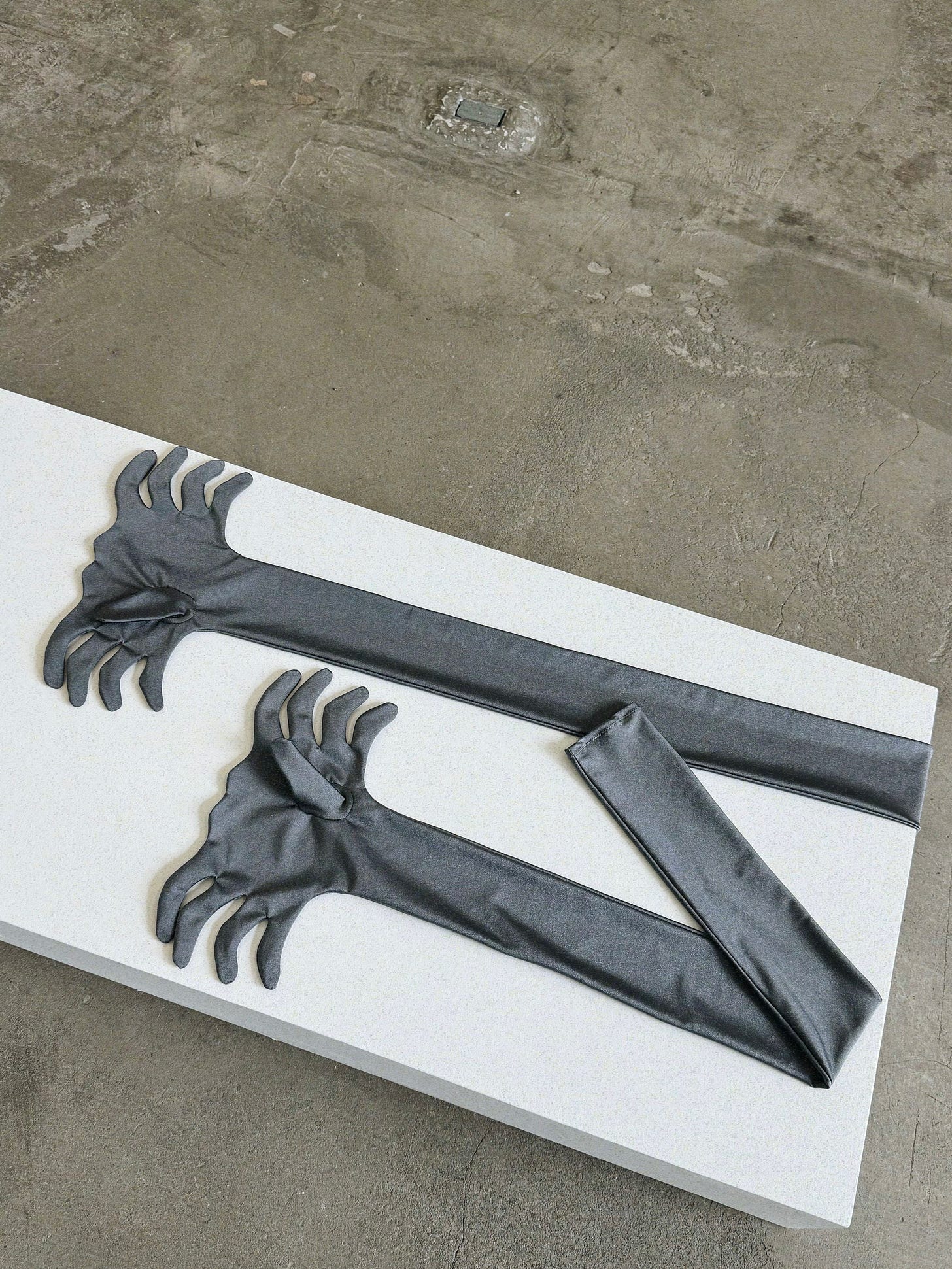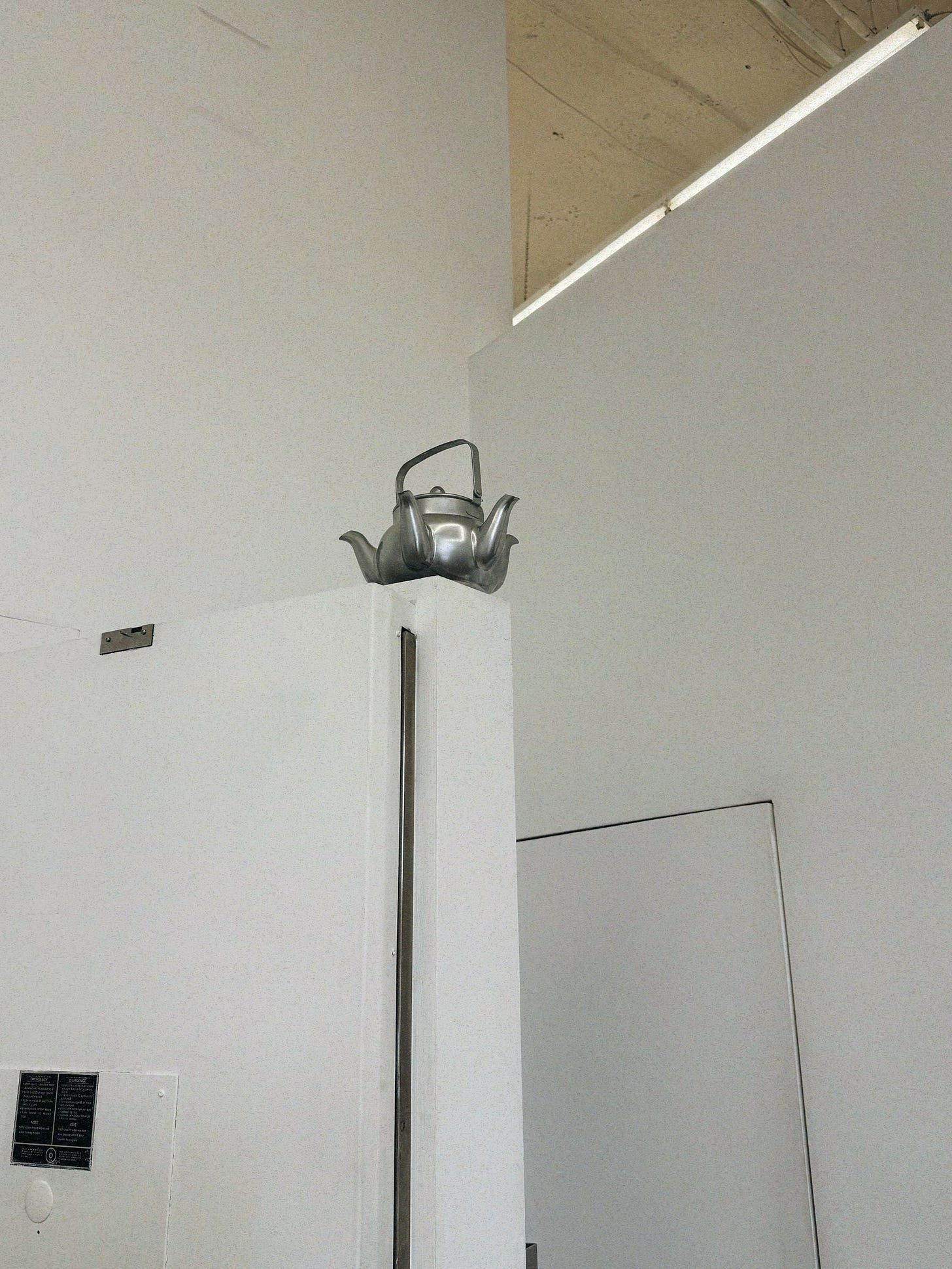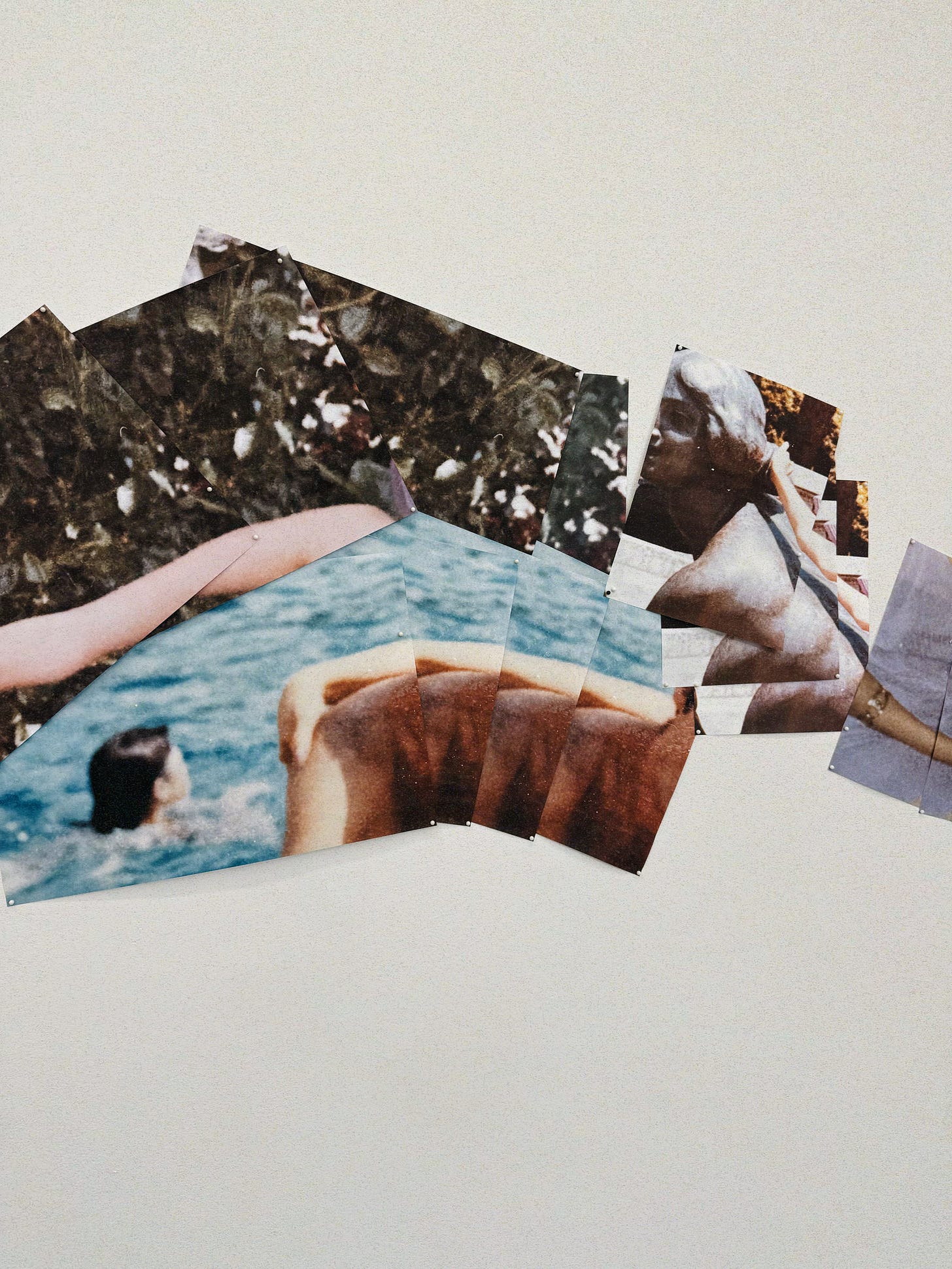When I entered Cooper Cole last week to see Nour Bishouty’s exhibition, Rock Paper Scissors, the only way I can describe it is: childlike delight. Despite knowing Bishouty and her art, which has explored archival memory and landscape, I didn’t immediately situate the work as hers. A childlike playfulness was lurking around each corner of the exhibition. When I spotted a little hand low to the ground or a sculpture balancing on the top of the door, it felt like I was let in on a secret only I was privy to.
Through the exhibition layout, Bishouty allows the viewer to discover each object and video at their own speed—the opposite of the didactic viewing experiences I’m used to. After the first lap of the exhibition, I picked up the press release to learn more and was greeted with one of the best texts I’ve read in a gallery (maybe ever?): an instruction manual that verges on poetry by Danica Pinteric. An excerpt is included below.
Yesterday, I visited Bishouty’s studio to continue the viewing experience, with the added delight of hearing her talk about the work. I feel so lucky to be invited into artists’ spaces. Like an accordion, the nature of the exhibition started to expand in front of me. In quick succession, I began thinking about the surrealist objects and fractured images in relation to Bishouty’s family, her childhood memories, and the impulse to materialize her imagination. I started to think of the shadows in the exhibition as physical representations of Carl Jung’s theory of the shadow self.
Shadow puppets, talking with your hands, pointing, sign language. The language of hands was on display. I began to be hyper-conscious of my own hands in conversation.
The following is an excerpt from the exhibition text by Danica Pinteric:
INSTRUCTIONS FOR HANDS, OR, HOW TO SPEAK WITH SHADOWS
This manual is intended for all who wish to speak with shadows. For centuries, many have communed with the shadows for a variety of purposes. This guide provides written instructions for hands, wrists, eyes, and minds. Bear in mind, a successful shadow is achieved partially through the manipulation of one’s hands, but just as importantly, the attunement of one’s vision.
THE TOOLS YOU NEED
1. Hands – stretch the fingers and palms to encourage elasticity
2. Light – candlelight (suggested), or a flashlight, or any small spot of light will suffice
3. Screen – a wall, a curtain, a scrim, a firm piece paper, a blank slate
BEFORE YOU GET STARTED
Look carefully at your hands. Many know their hands to be tools for work and everyday tasks, this will be different.
Pay attention to your breathing. Accept that all shadows are born a deception.
Allow your eyes to adjust. Remember that you will be performing in the dark.
Nour Bishouty is a multidisciplinary artist working across video, sculpture, works on paper, digital images, and writing. Broadly concerned with gaps in archival memory and the Western production of knowledge and fantasy, Her practice explores notions of articulation, permission, the failure of language, and the generative possibilities of misunderstanding.
Bishouty’s work has been exhibited internationally including at Art Jameel, Jeddah SA (2024), La biennale de Québec (2024); Cooper Cole, Toronto (2024) Gallery 44 Centre for Contemporary Photography, Toronto (2022); GTA21 Triennial, the Museum of Contemporary Art, Toronto (2021); Darat Al Funun, Amman (2017); Casa Arabe, Madrid (2016); Access Gallery, Vancouver (2015); the Mosaic Rooms, London (2015); and the Beirut Art Centre, Beirut (2014).
Her artist book 1—130: Selected works Ghassan Bishouty b. 1941 Safad, Palestine — d. 2004 Amman, Jordan, edited by Jacob Korczynski, was co-published in 2020 by Art Metropole (Toronto) and Motto Books (Berlin).
Nour Bishouty’s exhibition, Rock Paper Scissors, is up at Cooper Cole in Toronto until April 26, 2025.


